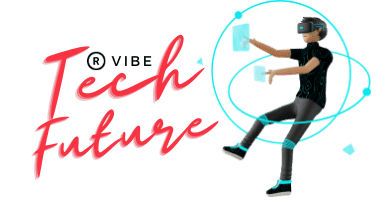The Internet of Things (IoT) is akin to a thriving forest, where each device acts as a sprout, contributing to a larger ecosystem. As these devices grow and evolve, the need for robust cloud scalability becomes essential to support their development and integration. This article explores how orchestrating the growth of IoT devices and leveraging cloud scalability can lead to a harmonious and efficient technology ecosystem, transforming individual sprouts into towering sequoias.
The Growing Landscape of IoT
Understanding IoT Growth
IoT encompasses a vast array of interconnected devices, from simple sensors to complex machines. Each device collects data, communicates with other devices, and contributes to the broader network. As industries increasingly adopt IoT solutions, the number of devices is expected to soar. According to estimates, there will be over 30 billion connected devices by 2025.
This exponential growth brings both opportunities and challenges. To harness the full potential of IoT, organizations must focus on effective orchestration and management of these devices.
The Role of Cloud Computing
Cloud computing plays a pivotal role in the IoT ecosystem. It provides the infrastructure needed for data storage, processing, and analytics. By leveraging the cloud, organizations can scale their IoT solutions quickly and efficiently, accommodating the increasing volume of data generated by connected devices.
Orchestrating IoT Growth
1. Seamless Integration
To transform sprouting IoT devices into robust, scalable solutions, seamless integration is crucial. This involves ensuring that devices can communicate effectively, regardless of manufacturer or protocol. Standards and protocols, such as MQTT and CoAP, facilitate interoperability, allowing devices to share data and insights effortlessly.
2. Data Management
As IoT devices proliferate, managing the data they generate becomes increasingly complex. Effective data management strategies, including data filtering and aggregation, can help minimize unnecessary data transmission to the cloud. This approach not only reduces bandwidth costs but also enhances the overall efficiency of the system.
3. Real-Time Analytics
Real-time analytics is essential for deriving actionable insights from IoT data. By processing data closer to the source through edge computing, organizations can respond to events as they occur. This capability is vital in scenarios such as predictive maintenance, where immediate action can prevent equipment failures.
Leveraging Cloud Scalability
1. Elastic Resources
Cloud platforms provide elastic resources that can scale up or down based on demand. As the number of connected devices increases, organizations can allocate more computing power and storage without the need for significant upfront investment in hardware. This flexibility is critical for accommodating peak loads during events like product launches or seasonal demands.
2. Cost Efficiency
Cloud scalability offers cost efficiencies, allowing organizations to pay only for the resources they use. This model is particularly beneficial for IoT applications that experience fluctuating demand. By avoiding the costs associated with maintaining excess infrastructure, businesses can allocate resources more strategically.
3. Enhanced Security
Security is a significant concern in the IoT landscape. Cloud providers often offer advanced security features, including encryption, identity management, and continuous monitoring. By leveraging cloud security measures, organizations can enhance the overall security posture of their IoT solutions.
Building a Sustainable Ecosystem
1. Collaboration and Standards
Building a sustainable IoT ecosystem requires collaboration among stakeholders, including device manufacturers, cloud providers, and software developers. Establishing common standards ensures that devices can work together seamlessly, creating a cohesive network that fosters growth.
2. Continuous Innovation
Innovation is vital for the ongoing success of IoT initiatives. Organizations must stay ahead of technological advancements, exploring new solutions that enhance scalability, security, and interoperability. Investing in research and development can drive improvements that enable IoT growth.
3. Sustainability Practices
As the IoT landscape expands, organizations must also consider the environmental impact of their solutions. Implementing sustainable practices, such as energy-efficient devices and responsible data management, can help minimize the ecological footprint of IoT technologies.
Conclusion
From sprout to sequoia, the journey of IoT growth is a complex yet rewarding endeavor. By orchestrating seamless integration, effective data management, and real-time analytics, organizations can foster a thriving IoT ecosystem. Leveraging cloud scalability enhances this growth, providing the necessary resources and security to support an expanding network of connected devices.
As we move forward, embracing collaboration, continuous innovation, and sustainability will be essential to realizing the full potential of IoT. By nurturing these technological sprouts into towering sequoias, we can create a robust, interconnected future that benefits industries, communities, and the environment alike.
FAQs
Q: What is the significance of cloud scalability in IoT?
A: Cloud scalability allows organizations to efficiently manage growing volumes of data and connected devices, providing the flexibility to adjust resources based on demand.
Q: How can real-time analytics improve IoT applications?
A: Real-time analytics enables immediate insights and actions, enhancing applications such as predictive maintenance and operational efficiency.
Q: What are some key challenges in managing IoT growth?
A: Key challenges include ensuring interoperability among devices, managing data complexity, and maintaining security across a vast network of connected devices.
Q: Why is collaboration important in the IoT ecosystem?
A: Collaboration among stakeholders helps establish common standards and fosters innovation, ensuring that IoT devices can work together seamlessly for greater efficiency and scalability.

